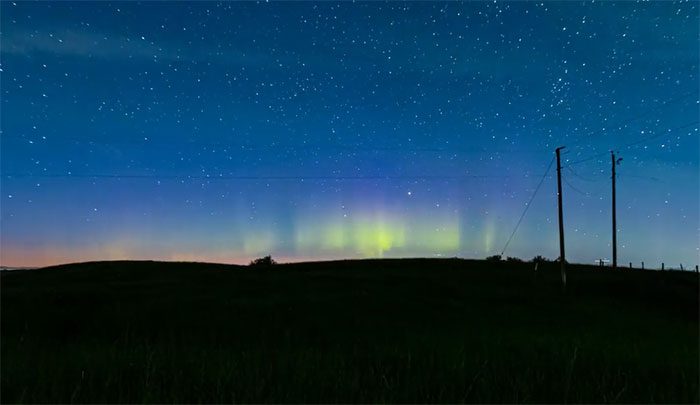A crack appeared in the Earth’s magnetic field on July 7 and remained open for 14 hours, creating strong winds and auroral phenomena.
The crack in the Earth’s magnetic field was caused by a rare phenomenon known as Co-rotating Interaction Regions (CIR) from the Sun. CIRs are large plasma structures that form in the low to mid-latitude regions of the heliosphere—the area surrounding the Sun that consists of its magnetic field and solar wind—when fast and slow solar wind streams interact with each other. Similar to Coronal Mass Ejections (CMEs), CIRs ejected from the Sun towards Earth can contain shock waves and compressed magnetic fields that cause special space weather phenomena, including auroras.

Aurora Borealis appeared in the sky on July 7.
This CIR impacted the Earth’s magnetic field early on July 7, causing a G1 geomagnetic storm that lasted for quite a while. Analysts at the National Oceanic and Atmospheric Administration (NOAA) believe that a CME was embedded in the solar wind prior to the CIR.
Cracks in the Earth’s magnetic field are not unusual. The magnetic field acts as a shield protecting our planet from storms emitted by the Sun. Scientists previously thought these cracks opened and closed relatively quickly, but later discovered they could remain open for hours.
“We found that the Earth’s magnetic shield experiences quite a bit of ‘draft,’ similar to a house with windows stuck open during a storm. The house deflects most of the storm, but some furniture still gets damaged. Similarly, the Earth’s magnetic shield absorbs most of the energy from space storms, but some energy still seeps in through the cracks, sometimes enough to disrupt satellites, power systems, and radio communications,” said Harald Frey, the lead author of a 2003 study on the Earth’s magnetic field.
Video: Harlan Thomas
The event on July 7 did not appear to cause any power outages or radio communication failures; instead, brilliant auroras graced the skies of Canada and the U.S. The Sun is gradually approaching its peak activity phase in the solar cycle (July 2025) and exhibiting many unusual activities. Astronomy enthusiasts now have plenty of opportunities to observe auroras, and these opportunities will continue to increase over the next three years.





















































